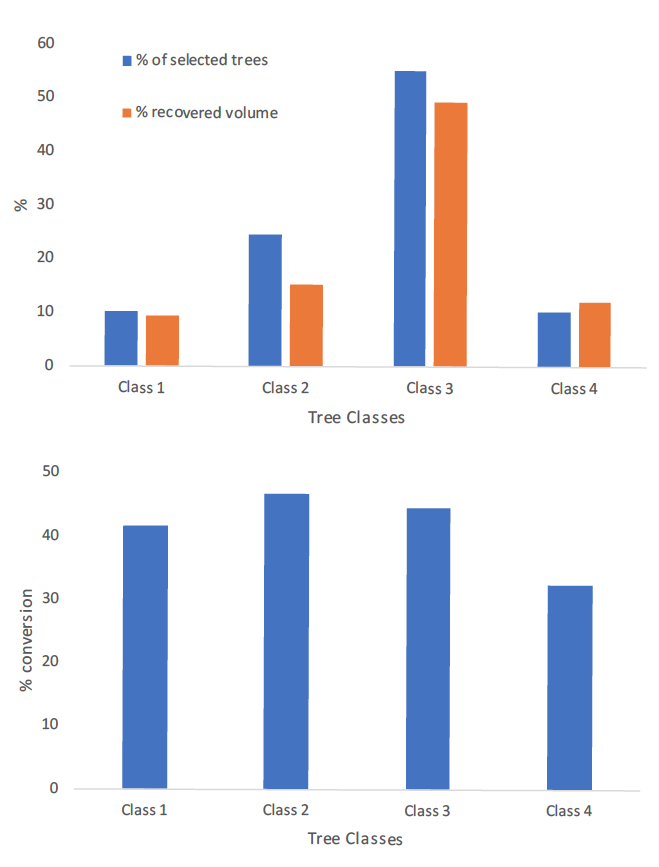Good Conversion from Bad Trees
Northland Totara Working Group newsletter, August 2019.
Harvest tree selection and conversion rates for farm-tōtara trees.
Recent harvests of farm-tōtara by the Tōtara Industry Pilot project (TIP), show that reasonable amounts of sawn timber can be recovered from tōtara trees with relatively poor form and saw-log grades.
 When managing a native forest for sustainable timber production wise selection of which trees to harvest is a critical factor. It is important to not just take from the best. Leaving good trees to keep growing is essential (i.e. - timber only grows on timber). In continuous cover forest management systems, harvests can be used as a silvicultural intervention. In other words, the opportunity to remove trees with poor form, to the advantage of better-formed stems often arises. But is this viable?
When managing a native forest for sustainable timber production wise selection of which trees to harvest is a critical factor. It is important to not just take from the best. Leaving good trees to keep growing is essential (i.e. - timber only grows on timber). In continuous cover forest management systems, harvests can be used as a silvicultural intervention. In other words, the opportunity to remove trees with poor form, to the advantage of better-formed stems often arises. But is this viable?
The first harvest of the TIP project extracted 77 trees. Each tree had been assessed before felling and attributed a tree form-class based on the features of its stem and its likely saw-log quality. Class 1 is the best, comprising tall, straight, branch-free boles. Class 2 includes a few small branches. Class 3 is heavily branched, Class 4 is trees with short boles, less than 2.7m and large knots. And, Class 5 is for multi-stemmed trees with no apparent merchantable log-volume.
In general, the volumes of sawn lumber recovered by class tended to reflect the percentage of that class in the resource. The conversion rates by class from standing volume to sawn volume was best in classes 1-3 (Table 2; Fig 1), however, even class 4 trees produced reasonable conversion rates (32.4%) to sawn volume. This suggests that depending on timber grade recovery and value, these trees may be usefully harvested in future operations.



 Farm Forestry New Zealand
Farm Forestry New Zealand